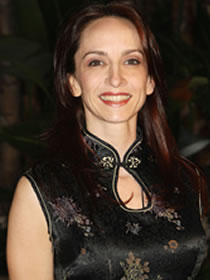

According to our Database, She has no children. We don't have much information about She's past relationship and any previous engaged.
#Eliza schneider british accent update#
We will update Eliza Schneider's Height, weight, Body Measurements, Eye Color, Hair Color, Shoe & Dress size soon as possible. Eliza Schneider Height, Weight & MeasurementsĪt 45 years old, Eliza Schneider height not available right now. She is a member of famous Actress with the age 45 years old group. We recommend you to check the complete list of Famous People born on 3 February. Learn How rich is She in this year and how She spends money? Also learn how She earned most of networth at the age of 45 years old? Popular AsĪctress, singer-songwriter, dialectologist, playwright, voice artist, dialect coach Discover Eliza Schneider's Biography, Age, Height, Physical Stats, Dating/Affairs, Family and career updates.

The empirical description of vowel productions over time presented here provides a guide for dialect coaches and performers alike for application in their work with Australian English.Eliza Schneider (Eliza Jane Schneider) was born on 3 February, 1978 in United States, is an Actress, singer-songwriter, dialectologist, playwright, voice artist, dialect coach. The corpus captures the speech of 95 Anglo-Celtic Australians in Australia’s largest city, Sydney, and includes recordings made at two points in time (1970s and 2010s) with speakers born between 19. Research methods from sociolinguistics and phonetics are applied to provide a detailed description of Australian English vowels as evidenced in a large, longitudinal corpus of spontaneous speech data. This paper is a resource to assist in the development of such awareness. Research in dialect coaching has long argued that dialect practitioners and learners must have sociolinguistic awareness of the phonetic reality of the dialect being represented. This partially stems from misconceptions about Australian vowel pronunciations (e.g., that mate and might are homophones) however, there is also a general lack of awareness about how Australian English has changed over time. With a view to contribute to the definition of AusE and NZE as linguistic objects in motion and to promote a dynamic portrait of each variety, we then provide contemporary oral data from the PAC programme as well as comparative analyses in favour of two major arguments for distinctiveness between AusE and NZE: rhoticity in NZE as well as the short front vowel shift in both AusE and NZE.ĭepictions of Australian English in theater and film by non-Australian performers are often met with negative public reactions by Australian audiences. After reconsidering a few parallel historical facts, common critical denunciations and lay theories on the origins of the two Austral varieties, the article focuses on the representation of AusE and NZE in the literature on the phonology of English accents around the world. This situation scarcely left any room for the possibility of specific phonological and/or phonetic variation within each variety, let alone the description of AusE and NZE as two separate linguistic entities in Australasia. In this article we first consider some historical arguments that eventually led to a misleading descriptive hotchpotch of AusE and NZE. AusE and NZE being amongst the latest varieties to have emerged in the English-speaking world, they have only recently been extensively studied and considered as valid research objects by the scientific community. Although there is currently no doubt among the scientific community that they constitute two distinct dialects of English with their own lexical, morphosyntactic, phonological and phonetic features, their description and representation have long been frozen into a unique “Australasian” dialect, in spite of an enormous amount of endocentric linguistic descriptions emerging in the second half of the twentieth century. Australian English (AusE) and New Zealand English (NZE) are two originally “transported” Englishes in the Southern hemisphere.


 0 kommentar(er)
0 kommentar(er)
